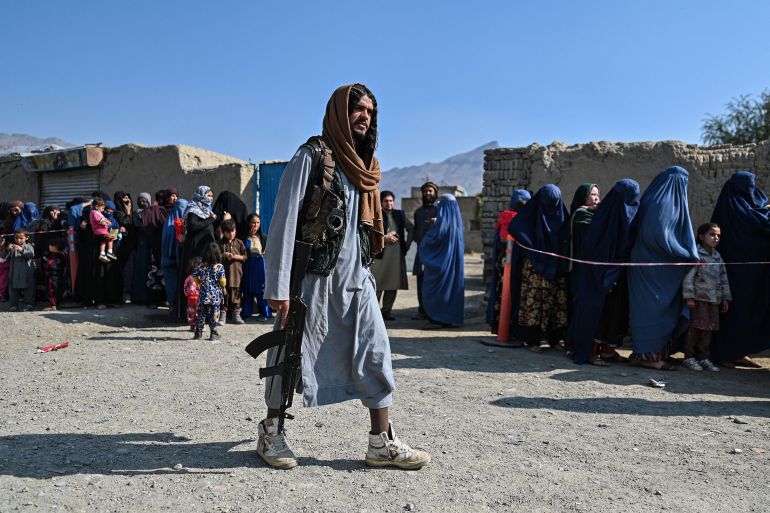A Taliban ban on women in the workforce can cost economy $1bn
A full recovery of the Afghan economy will not happen without female participation, according to a new UNDP report.

The Taliban’s move to restrict women from working could immediately cost the Afghan economy up to $1 billion, or 5% of GDP, the United Nations Development Programme said in a new report as the militant group seeks global help to avert a deepening crisis.
The UN report painted a grim picture of Afghanistan’s economy which is under strain with soaring inflation and an ongoing cash crunch. Women account for 20% of the country’s workforce and preventing them from working could shave half a billion dollars alone from household consumption, it said.
Keep reading
list of 4 itemsWill Taliban support for a vaccination drive eradicate polio?
Photos: Taliban rule sparks hopes of peace in rural Afghanistan
100 days of the Taliban | Start Here
Over the weekend the Taliban’s acting Prime Minister Mullah Mohammad Hassan sought global help in preventing a further crisis and gave assurances that the women’s rights would be protected based on Sharia law, under which they can study and work. While Hassan isn’t the first official from the new Afghan government to seek help, his administration hasn’t given clear directions on how they will support women.
The UN report found that the militant group had told all female government employees to stay at home and banned most girls from going to school after they swept into power in August. Only a small number of women in essential services like nursing have been asked to resume work.
“I want to say very clearly that there isn’t a real full recovery of the Afghan economy without female participation,” Abdallah al Dardari, the head of UNDP, said in an interview. “Our initial results show that the contribution of educated women to the Afghan productivity is higher than that of men with the same level of education.”
Restricting women from social life, including employment, adds more uncertainty to Afghanistan as it grapples with a sudden freeze in international aid which contributes as much as 40% of its GDP and 80% of the budget spending, the report said. The country’s GDP will contract 20% within a year and the decline may accelerate to 30% in the following years, it added.
Over $9 billion in Afghanistan reserves overseas remain frozen by the U.S. and its Western allies on concerns over the Taliban’s continued links with terrorism, human rights abuses and failure to build an inclusive government. The Taliban have constantly asked for these funds to be released — a request echoed by acting prime minister Hassan.
Afghanistan would need $6 billion to $8 billion in international grants annually to fund basic services, support growth and sustain peacemaking efforts, Al Dardari said. The country would require an estimated $2 billion to just lift the incomes those in extreme poverty to avoid a humanitarian catastrophe, he added.
The Taliban’s plea for the world to release the assets and resume aid could help “in the very short term,” although the bigger issue is to strengthen Afghanistan’s weak institutions said Adnan Mazarei a senior fellow at the Washington-based Peterson Institute for International Economics.“The de facto authorities are shooting themselves in the foot in many ways, including with the restrictions on women and others.”
Here’s some key facts and figures on women in Afghanistan:
- The economic impact of educating a girl in Afghanistan is more than double that for educating a boy, according to the UN report.
- The country was ranked 166 out of 167 countries on the UN’s gender development index in 2019.
- More a quarter of the 400,000 civil servants in Afghanistan are women. They have been banned from working until there are sharia-related procedures in place to ensure their safety.
- Millions of women voted in the last elections and 89 of the 352 members of parliament were female.
- Taliban unveiled a 53-member cabinet in September, which did not include any woman. In the previous government, there were 13 women ministers and deputy ministers.